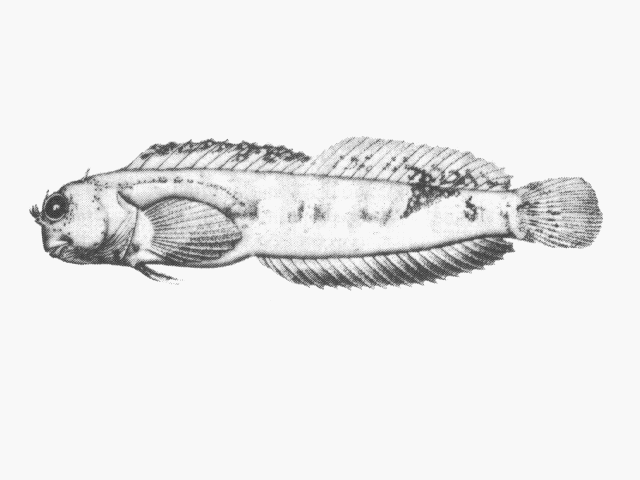| Blenniidae (Combtooth blennies), subfamily: Salariinae |
| 4.02 cm SL (male/unsexed) |
|
demersal; depth range 0 - 3 m |
| Western Indian Ocean: Natal, South Africa and the islands of Mauritius and Comoros. |
|
Dorsal spines (total): 12-13; Dorsal soft rays (total): 17-18; Anal spines: 2-2; Anal soft rays: 20-21. Pale with dusky margins on head and body; body sometimes with dusky bands; dark spot between 1st 2 dorsal spines (Ref. 4404). |
| Found in tidepools and rocky surge areas (Ref. 90102). Oviparous. Eggs are demersal and adhesive (Ref. 205), and are attached to the substrate via a filamentous, adhesive pad or pedestal (Ref. 94114). Larvae are planktonic, often found in shallow, coastal waters (Ref. 94114). |
|
(Ref. 96402)
|
| harmless |
|
Source and more info: www.fishbase.org. For personal, classroom, and other internal use only. Not for publication.
Page created by Jen, 05.08.02,
php script by kbanasihan 06/09/2010 ,
last modified by
dsantos, 20/08/10

